Discover something new about Norway’s Nordic neighbour, Finland! From its vast forests to its love of silence, here are some fascinating facts to impress your family and friends.
Finland, known for its stunning natural landscapes, including vast forests and numerous lakes, is a Nordic country situated in Northern Europe. It boasts a high quality of life and is known as one of the world’s happiest countries.
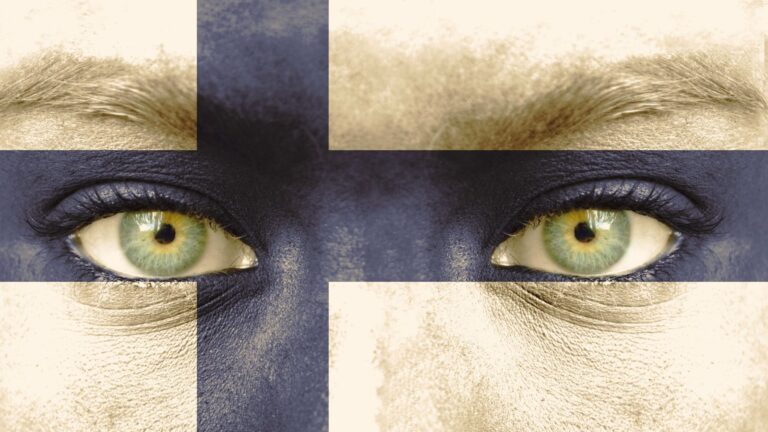
Finland is also known for its innovative education system, and strong commitment to equality and welfare. Finland is also celebrated for its design and technology industries.
Continuing our tour of the Nordic region, it’s time to look at Finland. The Nordic nation lies mostly to the east of Norway and Sweden, and has a long border with Russia.
I've been to Finland a couple of times. I'm a big fan of the capital city Helsinki but I also enjoyed my time in Tampere, which I felt had a very Trondheim-like vibe.
Now that the world of international travel has long since returned to normal, I'm looking forward to exploring Finland much more. Please feel free to make any recommendations in the comments.
In the meantime, here are some of the top Finland facts you may or may not know about this fascinating Nordic country. Enjoy!
1. Finland is the world's happiest country
The Nordic countries consistently rank at the top of the UN's annual World Happiness Report. But in 2020, Finland leapfrogged the rest to finish top of the pile. It has since retained its title, most recently in the 2024 rankings.
The rankings take into account many factors. Finland’s residents enjoy a high standard of living, underpinned by a comprehensive welfare system that ensures healthcare, education, and social security for all.
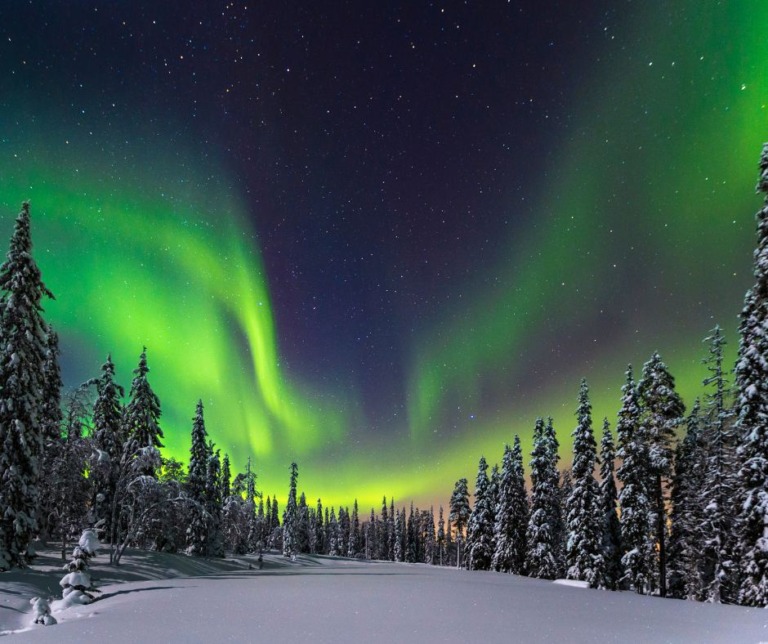
The country values community, trust, and equality, with low levels of corruption and high levels of government transparency fostering a strong sense of security and belonging among its people.
Additionally, Finland’s emphasis on work-life balance, access to nature, and community support contribute to overall well-being and happiness. The Finnish education system, recognized globally for its excellence, plays a crucial role in societal satisfaction by providing equal opportunities for all.
2. Finland's population is very similar to Norway
At the end of 2024, Finland's population stood at 5,637,214, according to preliminary data from Statistics Finland. That figure is remarkably close to Norway’s population of 5,585,044, highlighting the similar size of these two Nordic neighbours.
Despite their shared latitude and relatively small populations compared to other European nations, Finland and Norway have followed different demographic trends over the years.
Historically, Finland had a larger population than Norway, but Norway’s rapid growth over the past few decades—driven by high immigration and a strong economy—has narrowed the gap significantly.
Like Norway, Finland's population growth in recent years has been largely driven by immigration, as natural population growth (births minus deaths) has been stagnant or even negative.
Both countries have actively welcomed foreign workers to address labour shortages, particularly in sectors such as healthcare, construction, and technology. Finland, in particular, has been working to attract skilled professionals to counterbalance an ageing population and declining birth rate.
Despite these similarities, there are key differences between the two nations. Norway has a higher percentage of foreign-born residents—around 16% compared to Finland’s 8%—reflecting its status as a major oil-rich economy that has long attracted international talent.
3. But Oslo is bigger than Helsinki—sort of
Norway’s capital, Oslo, has a population of approximately 693,000, making it slightly larger than Helsinki, which is home to 675,747 residents. However, these numbers only tell part of the story, as city boundaries and definitions can vary significantly.
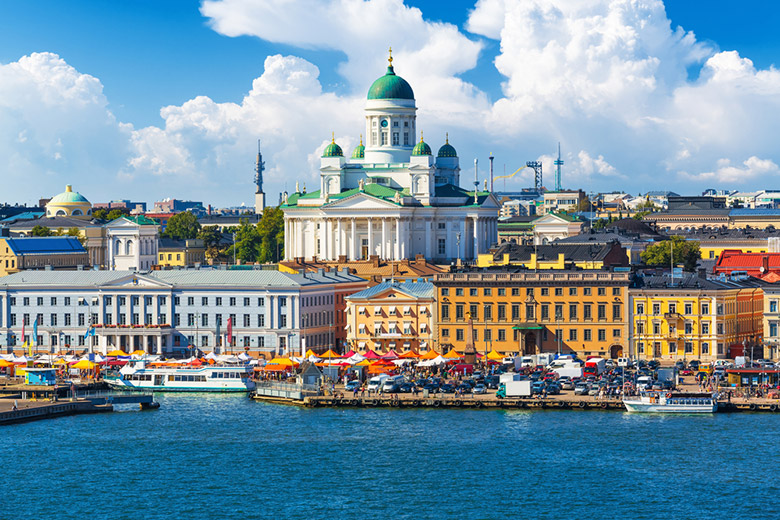
When looking at the broader metropolitan regions, the picture changes. The Helsinki Capital Region, which includes surrounding municipalities such as Espoo and Vantaa, has a population of 1.26 million, comfortably outpacing the Oslo metropolitan area, which is home to around 1.02 million people.
This reflects the more decentralised nature of Helsinki’s urban sprawl, with major population centres extending beyond the city’s official limits.
Despite their similar sizes, Oslo and Helsinki have distinct urban characteristics. Oslo’s city centre is compact, nestled between the Oslofjord and surrounding forested hills, which limits outward expansion.
In contrast, Helsinki, built on a series of peninsulas and islands, has more space for suburban growth, contributing to its larger metropolitan footprint.
Ultimately, whether Oslo or Helsinki is “bigger” depends on how you define city limits. While Oslo has a slightly larger official population, Helsinki’s wider metro area is the clear leader in terms of overall urban population.
4. Almost half of Finland's foreign population lives in Helsinki
Once again, Statistics Finland provides us with an interesting insight into Finland’s demographics. As of early 2023, there were 508,173 people with a foreign background living in Finland, reflecting the country’s increasing diversity.
👁️🗨️ Read more: Enjoying our tour of the Nordic countries? Learn something new about our friends from Iceland with these fun facts about Iceland 🇮🇸
Helsinki is the primary hub for Finland’s immigrant population. Within the city limits, 123,676 residents have a foreign background. However, when expanding the scope to include the entire Greater Helsinki region, the number rises to nearly half of Finland’s total foreign-background population.
This highlights Helsinki’s role as the country’s most cosmopolitan and internationally connected city.
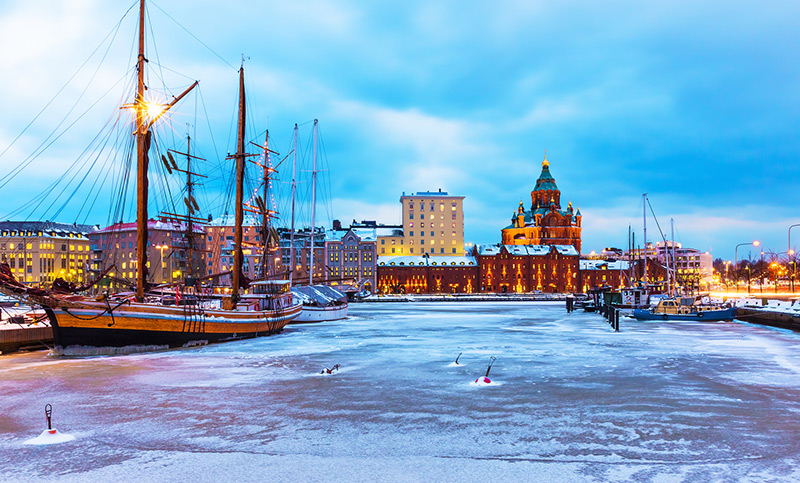
Among Finland’s immigrant communities, Somali and Indian populations have some of the highest concentrations in the Helsinki Capital Region, along with significant numbers of people from Estonia, Iraq, and Russia.
While other cities like Tampere, Turku, and Espoo also have growing immigrant communities, Helsinki remains Finland’s dominant centre for international residents, shaping the country’s evolving demographic landscape.
5. Finnish is totally different from the Scandinavian languages
Although Finland is often grouped together with Scandinavia, its language is entirely distinct from those spoken in its Nordic neighbours.
While Norwegian, Swedish, and Danish all belong to the Germanic language family and share a high degree of mutual intelligibility, Finnish comes from a completely different linguistic lineage.
Finnish is part of the Uralic language family, making it unrelated to the Scandinavian languages. Its closest major relative is Hungarian, though the two languages are not mutually intelligible. Another distant cousin is Estonian.
Unlike Scandinavian languages, which have many cognates with English and German, Finnish has a completely different structure, including 15 grammatical cases, no grammatical gender, and a highly agglutinative nature—meaning words are often built by adding multiple suffixes to a root word.
6. All Finns learn Swedish at secondary school
Despite Finnish being unrelated to Scandinavian languages, Swedish still plays an important role in Finland. In fact, it holds official language status alongside Finnish, meaning all Finnish students are required to learn Swedish at school.
Swedish is spoken primarily along Finland’s western and southern coasts, where many Swedish-speaking Finns—around 5% of the population—consider it their native language. This historical connection stems from Finland’s long history as part of the Kingdom of Sweden before becoming part of the Russian Empire in the 19th century.
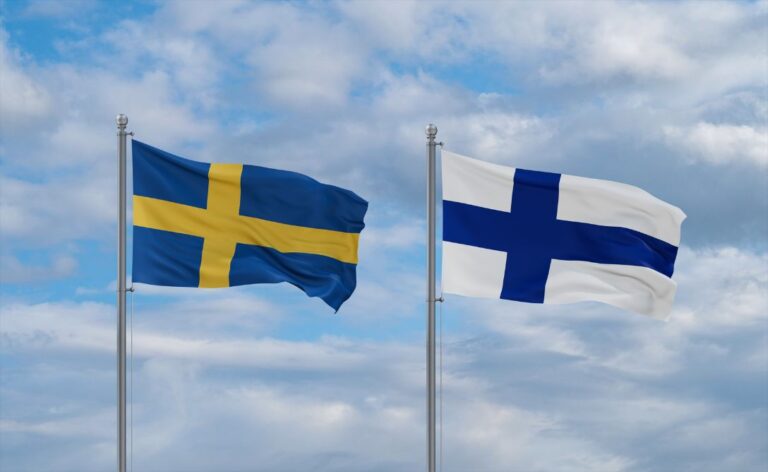
Of course, English is also widely taught in Finnish schools, so Norwegians or Danes who struggle to communicate in Swedish can usually switch to English without any problems!
7. Finns are the world's biggest coffee drinkers
The title of the world's most avid coffee drinkers surprisingly belongs not to the espresso aficionados of Italy or the café culture connoisseurs of France, but to the people of Finland.
Finnish people's coffee consumption outpaces that of any other country, making coffee an integral part of their daily lives and cultural identity.
On average, each Finn consumes about 12 kilograms of coffee annually. Such a figure might seem staggering to the uninitiated, but in Finland, it translates to a societal norm where drinking up to eight cups of coffee a day is commonplace.
This high consumption rate is not merely about the love for caffeine but is entwined with Finnish lifestyle and social customs. Coffee in Finland is a reason to gather with friends, family, or colleagues throughout the day.
The preference for light roast coffee, which is milder yet highly caffeinated, further distinguishes Finnish coffee culture, offering a flavour profile that has become synonymous with the country's coffee tradition.
8. There are 187,888 lakes in Finland
Finland is often called “the land of a thousand lakes”, but that nickname barely does it justice—the actual number is a staggering 187,888!
This figure includes all lakes larger than 500 square metres (5,400 sq ft), with around 57,000 of them exceeding 10,000 square metres (110,000 sq ft).
Lakes are at the heart of Finnish culture and identity. They shape the landscape, influence daily life, and provide year-round recreational opportunities.
Many Finns have summer cottages (mökki) by the water, where they retreat to enjoy the tranquility of nature, go boating, fishing, and swimming in the summer, or relax in a wood-fired sauna before taking a refreshing dip in the lake.
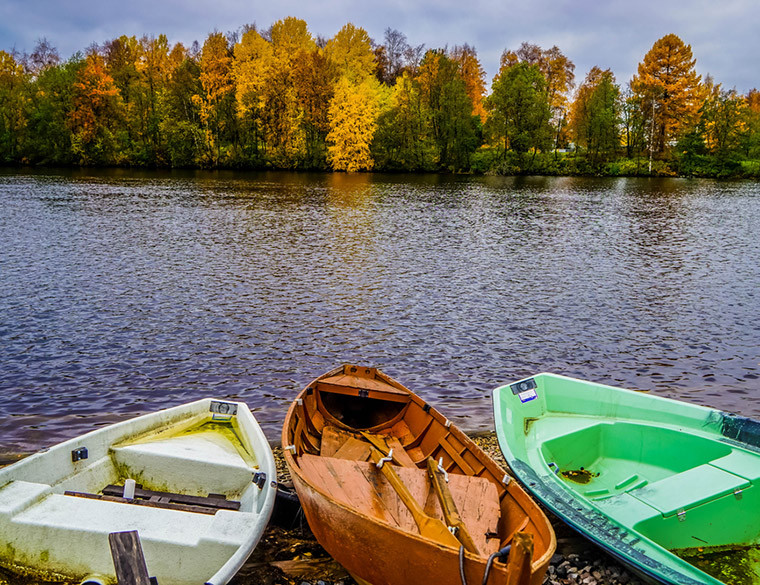
In winter, the lakes transform into frozen playgrounds for ice fishing, cross-country skiing, and even ice swimming, a popular Finnish tradition known for its health benefits.
9. Finns don't fill silences
I love this one! If you grew up in Finland, chances are you’re perfectly at ease with silence—and so is everyone else around you.
👁️🗨️ Read more: Enjoying our tour of the Nordic countries? Learn something new about our homeland with these fascinating facts about Norway 🇳🇴
In Finnish culture, silence isn’t awkward; it’s natural. When meeting an acquaintance, a simple nod or a quick “hei” (hello) is often enough before continuing on your way—no need for small talk. Conversations are typically direct and to the point, without unnecessary chatter.
This preference for quiet extends to public spaces as well. Whether on a bus, train, or in a queue, Finns instinctively keep their distance from others and avoid unnecessary conversation. Personal space is highly valued, and silence is often seen as a sign of thoughtfulness rather than discomfort.
10. Breakfast is a savoury affair
While some European countries embrace pastries and sweet treats for breakfast, Finland takes a more savory approach.
A typical Finnish breakfast consists of bread topped with butter, cheese, and cold cuts, much like Norway’s pålegg tradition. Whole grain rye bread (ruisleipä) is especially popular, offering a hearty and nutritious start to the day.
The sweetest a Finnish breakfast usually gets is a handful of fresh berries stirred into a warm bowl of porridge (puuro)—a simple yet beloved morning staple. But don’t be fooled—while breakfast may be restrained, Finns certainly have a sweet tooth.
Later in the day, cinnamon buns (korvapuusti), chocolate, and pastries make regular appearances with coffee, proving that Finns know how to indulge—just not so often first thing in the morning!
11. The Moomins are Finnish
The fun Finland facts continue! Swedish-speaking Finnish author and illustrator Tove Jansson created the hippo-like creatures known as the Moomins. The creatures starred in nine books, five picture books and a long-running comic strip along with their many TV appearances.
Jansson was brought up by artistic parents and studied art in Sweden and France. During her youth, Jansson and her family spent summers on an island, which is believed to have inspired some of the tales.
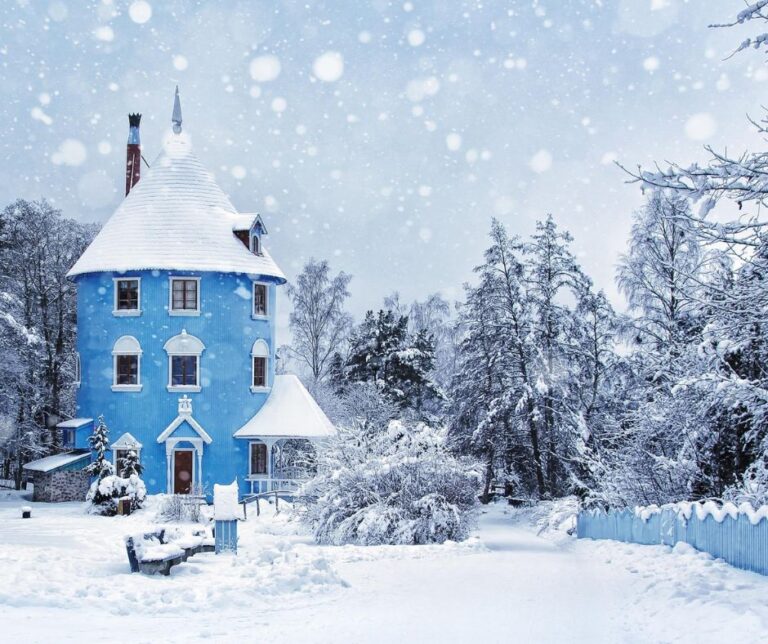
On the island of Kailo in southwest Finland, the Moomin World theme park is open daily from mid-June to mid-August.
The blueberry-coloured Moomin House, in which guests can explore all five levels, is one of the park's main attractions. It’s just one of many Moomin attractions throughout Finland.
12. Most Finnish children have two birthday parties
In Finland, birthday celebrations are a significant part of childhood, with a unique tradition that sees many children enjoying not one, but two separate parties in honor of their special day.
The first gathering is usually dedicated to the child's friends, a lively and joyous occasion filled with games, treats, and laughter, allowing young ones to revel in the company of their peers.
The second celebration is more family-oriented, involving relatives and sometimes close family friends, where the focus is on familial bonds and shared joy, often marked by traditional Finnish birthday customs and a meal together.
Conversely, as Finnish children grow into adulthood, the grandeur of birthday celebrations tends to diminish. Adult Finns typically reserve grand celebrations for milestone birthdays only.
13. Finland is sauna mad
Sauna is not just a tradition in Finland; it's a way of life. Estimates put the number of saunas in Finland at around two million. That's not bad for a population of 5.3 million!
The significance of saunas in Finland extends beyond mere numbers. These hot rooms have historically been places of relaxation, purification, and bonding. For centuries, they have been integral to significant life events. Historically, women even gave birth in saunas because they were considered the cleanest places in homes.
In modern Finland, saunas can be found just about everywhere. From sleek designs in city apartments to rustic cabins hidden amidst the vast forests, each sauna offers a unique experience. They are not just restricted to homes. Many businesses, including major corporations, have on-site saunas for their employees.
14. 74% of the country is forested
Finland isn't just known for its lakes. Did you know that it’s also the most forested country in Europe? A staggering 74% of Finland’s land area is covered in forest—that’s an area larger than the entire United Kingdom or Italy.
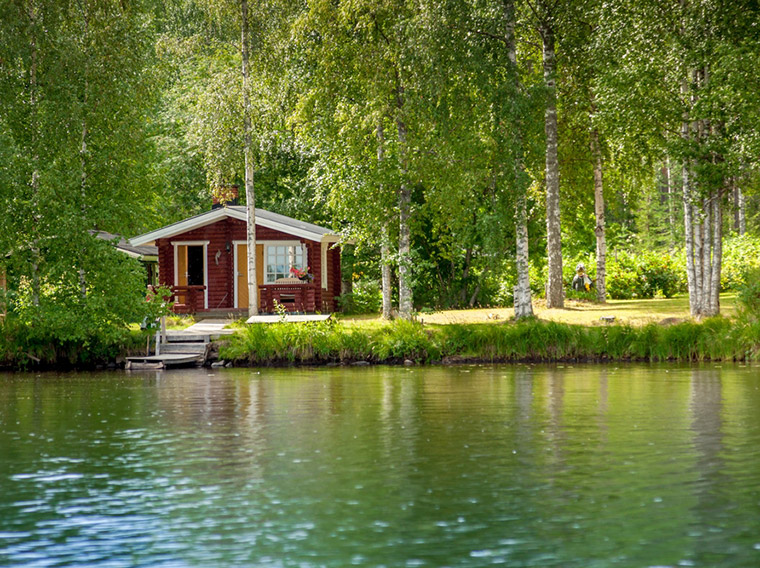
These vast woodlands, combined with Finland’s countless lakes, give the country its iconic natural landscape. The forests are primarily made up of pine, fir, and birch trees, creating a wilderness that plays a vital role in Finnish life.
Forests are not just part of the scenery—they are deeply ingrained in Finnish culture and the economy. Many Finns retreat to forest cabins (mökki) for relaxation, enjoy foraging for berries and mushrooms, and embrace the country’s ‘everyman’s right' (jokamiehenoikeus), which allows everyone to roam freely and connect with nature.
Whether for leisure, industry, or simple tranquility, Finland’s forests are just as essential to its identity as its lakes—earning it the well-deserved nickname, “the Green Gold of Europe.”
15. Finland is a mobile gaming powerhouse
The global mobile gaming phenomenon Angry Birds has its roots in Finland. The game was created by Rovio Entertainment, a company founded by a group of students in 2003.
What started as a small project exploded into one of the most successful mobile games of all time, leading Rovio to go public in 2017 with a valuation of $1 billion.
But Angry Birds isn’t Finland’s only contribution to the world of mobile gaming. Finnish developers have a track record of creating iconic games that have shaped the industry.
Nokia’s Snake, first introduced in the late 1990s, is widely regarded as one of the most influential mobile games ever, setting the stage for mobile gaming as we know it today.
Meanwhile, Clash of Clans, developed by Finnish company Supercell, became another worldwide sensation, proving that Finland is a powerhouse in the mobile gaming industry.
16. ‘Suomi' is Finnish for Finland
Suomi is the Finnish name for their homeland, known internationally as Finland. This linguistic distinction highlights the unique cultural and historical identity Finns hold.
The origin of “Suomi” is shrouded in mystery, with various theories attempting to explain its etymology. Some suggest it derives from a word related to “land” or “people” in ancient Finno-Ugric languages.
Others propose connections to terms signifying “swamp” or “fishing,” reflecting the country's rich natural landscapes and traditional livelihoods.
The name “Finland,” on the other hand, has a clearer past. Its earliest documented appearance is on a Scandinavian runestone, denoting it as the land of the Finns.
This external nomenclature, used by neighbouring countries, contrasts with the internal name “Suomi,” emphasising the perspective from which the country is viewed.
17. Finland is home to Santa
Finland holds a unique position in global folklore as the residence of one of the most iconic figures in Western culture: Santa Claus.
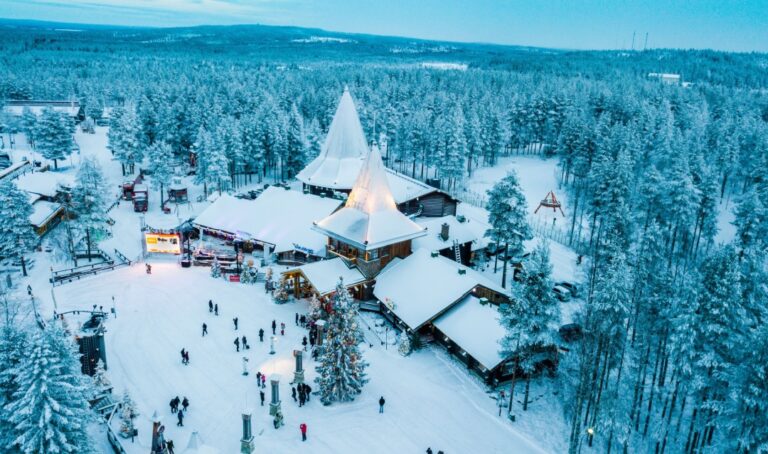
The city of Rovaniemi, situated within the Arctic Circle, is widely acknowledged as Santa Claus's official residence, a designation that captures the imagination of visitors from around the globe.
Rovaniemi's “Santa Claus Village” is a theme park dedicated to the jolly figure of holiday lore. Within the confines of Santa Claus Village, the magic of Christmas is alive throughout the year.
Guests have the extraordinary opportunity to meet Santa Claus himself, creating unforgettable memories for children and adults alike.
The village offers the unique service of the Santa Claus Main Post Office, where visitors can send greetings to loved ones with a special postmark exclusive to this location, adding a touch of magic to every correspondence.
Beyond the interactions and postal souvenirs, Rovaniemi and its surroundings offer a breathtaking backdrop of snow-covered landscapes, northern lights, and pristine wilderness, embodying the quintessential winter fantasy.
18. Finland is a land of metal bands
Finland has a high density of heavy metal bands. In fact, it has more heavy metal bands per capita than any other country in the world.
The Finnish metal scene is diverse, with bands spanning various sub-genres from symphonic metal to death metal, doom, folk metal, and beyond. Bands such as Nightwish, Children of Bodom, HIM, Stratovarius, Amorphis, and Apocalyptica have gained international acclaim.
Why is the metal genre so popular in Finland? While it's hard to pinpoint a single reason, several factors contribute to this phenomenon. The Finnish cultural landscape, which reveres authenticity and individuality, might be one.
The long, dark winters and the country's remote, vast landscapes may also play a part, providing an atmosphere that resonates with the intense and often melancholic tones of metal music.
19. There’s a national ‘sleepy head day’
In Finland, ‘National Sleepy Head Day' or ‘Unikeonpäivä' is a fun and lighthearted tradition celebrated on 27th July each year.
The day is marked by playful pranks, where family members might wake up the last sleeping person in the household by throwing water on them or, in some cases, even tossing them into a lake or the sea. It's all done in good fun, and many communities and families have their own ways of marking the day.
The roots of the tradition are believed to be associated with religious stories, specifically the tale of the Seven Sleepers of Ephesus, who, as the legend goes, retreated into a cave and slept there for centuries as a way to escape religious persecution.
Have you ever been to the country? What's your favourite among these fun Finland facts? Or perhaps there's something else you'd like to share? Let us know down in the comments.



Hungarian isn’t the closest relative language to Finnish. Actually, it is Karelian, but because most people don’t know it, let’s say Estonian. And the Sami language, which is spoken also in Norway, is a closer relative to Finnish than Hungarian.
Sami languages,l am not sure origin.But l know that Japanise,Soumi languages,Hungary languages and our country Türkiye languages origin came from Ural-Altay languages origin group from Ural-Altay middle Asia.Your information useful .
Traffic signs in Helsinki have three languages: Finnish, Swedish, and English. (I don’t know about the rest of Finland; I have only had the pleasure of visiting Helsinki.)
Wow, I didn’t expect that! I guess that helps a lot more people understand the traffic signs. (As someone who only knows English that would make it a lot easier to visit Helsinki.)
As a third generation Finn, I am always proud of my heritage. While most Americans are proud to claim a connection to revolutionary heroes, I often felt left out because my great-grandparents emigrated to the USA. Finally, in high school, while singing in a choir concert the song “ This is My Country,” I understood what it meant to be a decendant of Finnish immigrants as we belted out the second verse. “This is my country, land of my choice. This is my country, hear my proud voice.” I had written my term paper for junior English on the Winter War, had grown up eating Finnish food, and in 2001 visited Finland for three weeks. It was exciting to visit the places where my ancestors were born. The country was beautiful and the people were so nice. I am proud of my Finnish blood.
Just came back from Helsinki for a few days playing at the Savoy Theatre with an Elton John Tribute show. We did 4 shows and all were almost sold out! 1st half they were quite reserved but very appreciative after each song, 2nd half they all got up bopping!
But very impressed with the place, this time of year too, like something out of a Dickens novel, very Christmassy indeed.
People were super friendly and hospitable. Didn’t hear a single police car siren all week! For a capital city, that’s saying something!
Would love to return one day!
Thank you for a good article, but Swedish is not a language of much importance in Finland, at least among young Finns. It is a language that is being marginalised and has already been replaced by English.